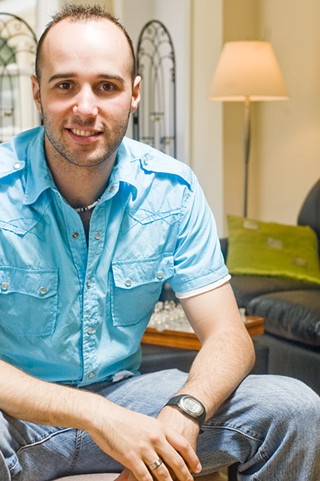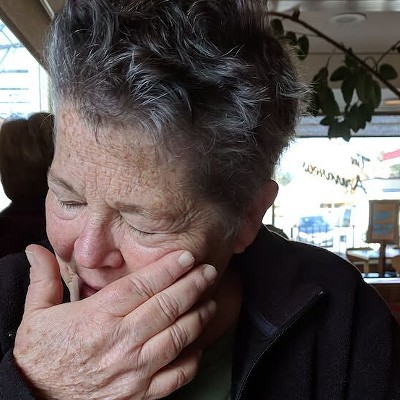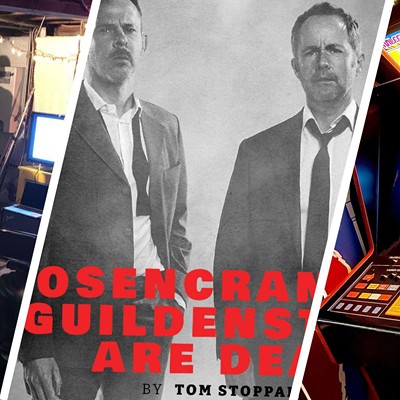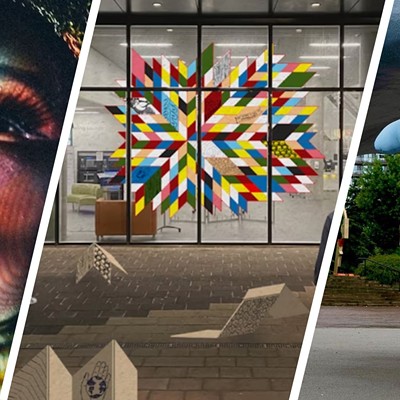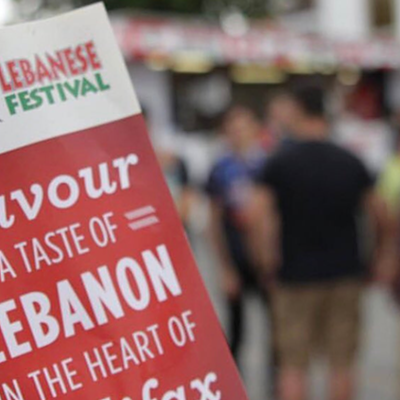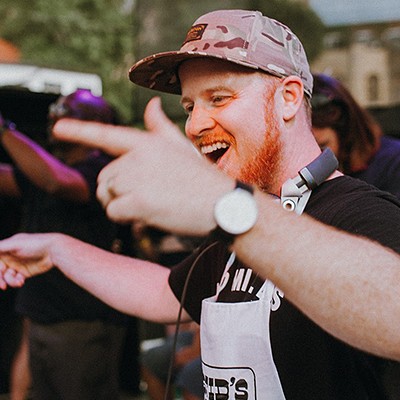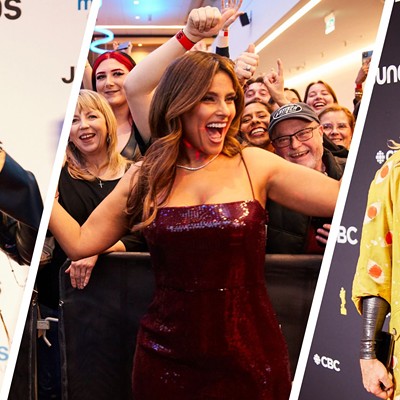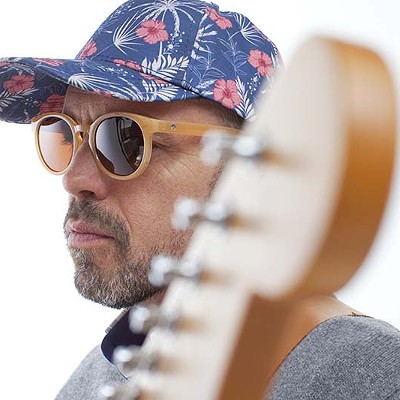Ian McKinnon has been going to gay pride parades on and off for the past 26 years. For the last three years, it's been "off."
Lacking substance. Middle-class conservative. Normal. These are the words he and others use to describe the parade—not just the Halifax Pride parade, but gay pride parades in general.
Pride parades date back to June 1969, when gay men, lesbians and transgendered people in New York rioted following a police raid on the Stonewall Inn, a small gay bar in Greenwich Village. One year later, the Gay Liberation Front organized a commemorative march, along with their counterparts in Los Angeles and San Francisco. Since Stonewall, contingents of gay activists worldwide have organized annual gay marches—sometimes despite heavy opposition: earlier this year, the mayor of Moscow prohibited that city's march on the grounds that it would erupt in violence (which it did). Just being gay in nine countries is still punishable by death, reports the International Lesbian and Gay Association.
But in the mid-1990s, organizers in politically stable countries like Canada began calling the marches parades, signaling a slide away from activism and protest into pure, exhibitionist celebration of lesbian, gay, bisexual, transsexual, transgender, intersex, queer, questioning, two-spirited people and their friends—that's who Pride Toronto, the fourth largest gay parade in North America, over one million strong, says it celebrates. The largest parade internationally was held in Sao Paulo, Brazil in June: three million participants. Other parades, such as Halifax's, shifted events to July in order to accommodate parade-hopping—and moved further away from the Stonewall riots.
These subtle changes reflect contemporary times, a coming of age. But if pride parades worldwide are one big allusion to Stonewall, if they don't represent a fight for or against anything, then they also signal the turning of a corner: from activism to tokenism. And if that's true, hasn't gay pride strayed too far from its radical roots?
"I thought I was fighting for something new," muses McKinnon, 50. He first marched 1981 in Toronto's first march. "Not for the same thing that everyone else had—not to be equal to everyone else.... I thought we were actually part of a larger critique of capitalism. I thought we were going to change the world."
McKinnon is not alone: it's become increasingly commonplace to scorn parades in everything from gay-authored blogs to publications like the Guardian, The Economist and The Village Voice: "It's not just uncool to go to the parade, it's spiritually unsatisfying," writes one gay man named Mike Albo in the Voice. And another, Richard Rothstein, writing on queersighted.com: "The question I keep asking myself is: a celebration of what?"
The victories are mitigated by anti-gay violence in countries like Russia, Kosovo, Iran, Serbia, Israel and Namibia. And in the US: a 72-year-old gay man was beaten dead in Detroit in February; a 17-year-old Texas boy in 2005. But the cynicism is partly in response to many lesbian and gay political victories; there's a sense that pride is outmoded.
After all, we've recently won so much...at least in Canada. In 2005, Canada became the fourth country in the world to legalize same sex marriage—after Belgium, the Netherlands and Spain. A year earlier, sexual orientation was added to the hate propaganda section of the Criminal Code, making it illegal for people to propagate anti-gay hate. That was all follow-up to the amending of dozens of federal statutes in 2000, including pension benefits, bankruptcy protection, income taxes, old age security and immigration for homosexual common-law couples.
"I do worry about assimilation," says McKinnon. "It's a kind of cultural genocide—this, "Here, have your rights. Take them.' It's sanding down the bumpy parts of gay culture to make them palatable."
It's a far cry from 1978. That's the year Canada's Immigration Act was amended to remove a ban on homosexuals as immigrants—and that's the summer Halifax's first gay pride march just happened. Lynn Murphy, who went on to chair the Halifax Pride Committee for several years in the 1980s and "90s, says the spirit moved someone during the Sixth National Gay Conference, held in Halifax.
"One young man—he was only 18 or 19 at the time—organized a couple of hundred of us," recalls Murphy. Among the participants were the International Socialists and a group called Wages for Housework. "We were probably thinking about Stonewall, and we must have marched on the sidewalk. We marched to the front gates of the Public Gardens on Spring Garden, milled around in front of the gates for awhile. And then we went home because we hadn't planned what to do next."
Officially, the first Halifax march wasn't organized until 1988. It sounds incredible from a 2007 perspective, but some people marched with paper bags on their heads.
The obvious changes raise several questions: Nearly 40 years after Stonewall, should queer protest go the way of sparsely attended Remembrance Day memorials? Or are people like McKinnon just bitter, old codgers mourning their idealistic youth—and, as he puts it, a generation of gay men who died with AIDS? Like feminism, has the gay rights movement been watered-down by the mainstream? Or are the cynics just nostalgic for an old-fashioned Christmas?
Perhaps the best reason to protest against pride parades is the fact that it's so often now about the almighty dollar: hand-in-hand with achieving mainstream success comes out and out—and out of the closet—commercialism. After all, the Sao Paulo parade is one Brazil's biggest tourist attractions. Toronto Pride, with a budget of one million dollars, contributes an estimated $80 million to that city's economy.
"There was a point where I used to say I can't afford to be gay," says McKinnon, a student, artist and part-time instructor. "I live too hand-to-mouth to be like Will and Grace. Or to follow the Black and Blue circuit party," he says, referring to Montreal's internationally successful—and moneyed—dance event. "It's interesting: we don't talk about "class' anymore."
It isn't that McKinnon is humourless: his face lights up about the Homo Hopper, a revamped Harbour Hopper tour of queer Halifax that the 2007 Halifax Pride Committee organized for Pride Week: "That's something I'd go on." (When it happened last Sunday, it was a huge over-sold success.)
No, it's more like an ethical dilemma centred around this: Has the quest for different been subverted by achieving same?
Not so much, says Halifax Pride's parade coordinator. Andy Hewlett, 23, carried the huge rainbow flag at the front of last year's parade—spectacularly, in his military garb.
"It was a very defining moment for me to walk in the parade in my uniform," he says. The experience motivated him to volunteer coordinate this year's parade, only his second ever: "But until equal rights are across the world, we need the parade. Until they can be free, we have to have Pride."
"Until parents don't assume their child is straight," pipes in Lee-Anne Poole, 21, the Halifax Pride events coordinator.
"It happens every year," says an unfazed Raymond Taavel, referring to the rumoured demise of gay pride. "But the question is more intense over the past years. We have spousal rights, adoption.... So, is Pride still necessary?"
The media coordinator for the 2007 Halifax Pride Committee thinks so. He has been going to gay pride marches or parades since 1985 in Toronto, "back when it was still a little party" on Church Street grand marshalled by Svend Robinson, then Canada's only openly gay MP.
But Taavel says his most memorable gay pride parade is encapsulated in a four-year-old moment: in 2003, then co-chair of Halifax Pride, he watched an unprecedented swell of 5,000 participants and "an amazing sea of balloons" descend on Sackville Landing.
"We used to have to go banging down doors; now they're clamouring to get in," says Taavel. "Organizations are beginning to "get it,'" such as Nova Scotia's Capital Health, Casino Nova Scotia and, for the first time this year, Tall Ships. In six years, the Halifax Pride budget has grown five times to $40,000, but it's not corporate.
"It's like the Lebanese Cultural Event," says Poole, pointing out the second annual Reel Out film festival, one of a long list of queer-focused cultural activities taking place this week. "Pride is not just a parade and it's not just for gay people."
And it's not just about numbers: "We have events that will be absolutely successful if only 10 people go," she says. "Halifax is small; I think everyone keeps on growing, but it still feels so like six people."
I know what Poole's talking about. The Halifax parade gets bigger every year, and more organized, but it's still intimate and friendly. And reminiscent of some of the largest, most inspiring lesbian and gay demonstrations I've ever participated in: the 1993 March on Washington for Lesbian, Gay and Bi Equal Rights and the 1994 International March on the United Nations for the Human Rights of Lesbian and Gay People—that was also the 25th anniversary of the Stonewall riots.
Driving down the eastern seaboard with a van-load of friends felt like driving to Mecca. Along the way, we passed hundreds of fellow queer pilgrims with Act Up! AIDS activist and pink triangle decals in their rear windows. The marches felt like warm baths: colourful, exhilarating, strident affairs. I felt globally gay. Understood. Respected. It's a pure joy that rears its lovely head at every subsequent parade.
Jane Kansas, a contributing editor to this newspaper, was my then-partner—and an outspoken lesbian and gay rights activist. She returned from Washington and then New York with an arsenal of new pro-gay weaponry: bold slogans; professionally designed buttons; large, mass-produced, easy-to-read placards—by-products of that burgeoning gay commercialism, which she adapted as co-chair of Halifax Pride in the mid-1990s.
"Around 1995, the big expense was $1,000 to print "Pride not Prejudice' signs to hang in the Metro Transit buses," she remembers. As a not-for-profit, the Pride committee could hang the laminated signs in the buses for free; today, the Halifax Pride parade is big enough that Metro Transit sponsors a bus in it. Another tough project was producing a slick TV public service announcement on the parade. Getting city hall to hoist the rainbow flag in the Grand Parade was a big deal. This year, Halifax mayor Peter Kelly eked out time to parade gay.
"What else changed is that there also used to be a guy with a hateful sign who would stand in the middle of the road and everyone in the parade would have to walk around him. He's gone. Then it was, "We're here, we're queer—get used to it,'" says Kansas. "Now it's, "We are the people in your neighbourhood.'" Like this year's local organizers, Kansas says: "Now it's much more like a Shriners' parade. Three hundred fat men driving in tiny cars is way more fun than three of them. Numbers do matter—but not politically."
But Kansas also says that she's changed: "It may be a gay act to clean out the cat litter, but I don't feel gay."
You probably will find both Jane Kansas and Ian McKinnon in the throng of 6,000-strong parade-goers on July 21.
"It's like your birthday. It's the one day of the year when you're in the parade, not watching it," says Kansas.
"The rain might keep me away," admits McKinnon. "But in the Halifax context, numbers do matter. So if I thought the turnout was going to be disastrously small, I'd be there."
But he's still a skeptic: "It's not like we pass on our family history . Instead of being in the street, maybe we should be building a library. That history has to be passed on somehow—it doesn't happen on the knee like in an ordinary family."
Taavel agrees: "The younger generations are oblivious to their good fortune—that's great, but at the same time we have to recognize our history. I never thought, for example, that I'd see the day that we had same-sex marriages."
It's like the message of war veterans and older feminists, of anyone who can see there's still an undercurrent of prejudice from the status quo: As a society, unless we know our history—violent, fearful, angry—we probably run more risk of repeating it. Being more interested in parades than marches, in the present than the past won't change the truth.
"For some it's the day that they're out," says McKinnon. "It's rooted in very concrete political rights"—like the right to employment, housing, marriage. "Those things were won, and now it's the "anniversary.' But if we're going to celebrate, then we have to know what we're celebrating."
The 19th annual Pride Day parade, July 21 starting on Maitland Street at 2pm, going south on Brunswick to Spring Garden, then to finish with a party on the Common.
Halifax journalist Lis van Berkel will be walking in this year's parade, rain or shine.

